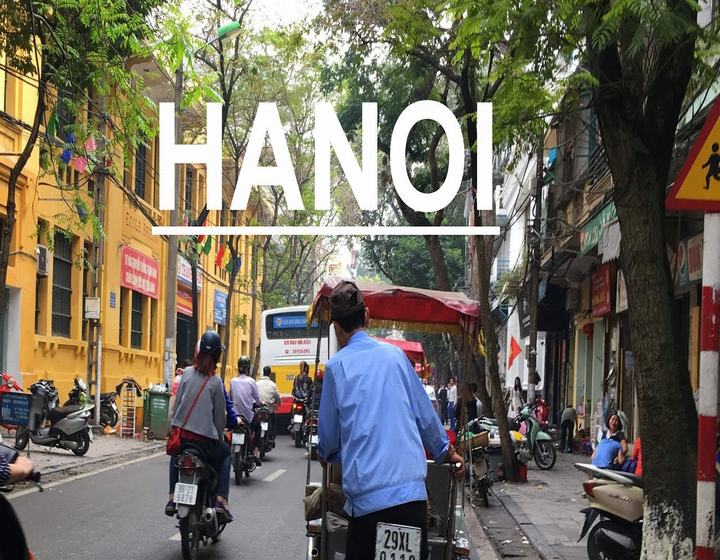
Hoan Kiem District in the heart of Hanoi boasts the beauty of architectural landmarks dating back to French colonial times.
Hanoi Post Office

|
Built in 1899 and located at 75 Dinh Tien Hoang Street, this was one of the first French-style buildings to come up in Hanoi. It was designed by Heri Vildieu, the architect of many other buildings in the city such as the Supreme Court, Presidential Palace and Hoa Lo Prison.
Locals also call this landmark “lakeside post office” as it overlooks the Hoan Kiem (Sword) Lake.
Hoa Lo Prison
 |
Its French name, Maison Centrale, can still be seen at the entrance at 1 Hoa Lo Street. Hoa Lo Prison was used to incarcerate Vietnamese political prisoners but later housed American prisoners of war and was known in the U.S army as the “Hanoi Hilton” during the Vietnam War (1954-1975).
Its four sides overlook Hai Ba Trung (Rollande Prolonge), Quan Su (Rue Richaud), Tho Nhuom (Teinturiers), and Hoa Lo (Prison) streets.
Built in 1899, it has been well maintained and is now a popular historical and architectural attraction for both locals and foreign visitors.
State Bank of Vietnam
 |
Built in 1875, the State Bank of Vietnam building used to be the Hanoi branch of Indochina Bank (Banque de l’Indochine) established in 1875 in France.
Situated at 49 Ly Thai To Street, it is behind Paul Bert Park, now known as Ly Thai To Flower Garden, not far from Hoan Kiem Lake.
Despite being a European-style building, its façade is decorated with oriental motifs usually seen on Vietnamese pagodas and temples like the seal script and octagon.
St. Joseph Cathedral
 |
The Neo-Gothic style St. Joseph Cathedral, the oldest church in Hanoi, has many of the same design elements as Notre Dame Cathedral in Paris.
Built between 1884 and 1888, the church at 40 Nha Chung Street is 64.5 meters long and 20.5 meters wide, with two bell towers of 31.5 meters high.
It is now not only a place of worship but also a hip hangout for young people from all over the country.
Government Guest House
 |
The Government Guest House, a classic French building at 12 Ngo Quyen Street (Henri Rivière Boulevard), used to be known as Tonkin Palace and housed the Tonkin Governor. It was designed by Adolphe Bussy with some style influences from the Napoleon III era.
The house, built in 1918, survived both the French and American wars. In 1945 President Ho Chi Minh moved into it and its name was changed to Bac Bo Phu.
Trang Tien Plaza
 |
Trang Tien Plaza at 24 Hai Ba Trung Street was originally called Maison Godard. It was taken over by the Vietnamese government in 1960 and renamed as Bach hoa tong hop (General store).
In 2002 the store, built in 1901, was renovated and has since been known as Trang Tien Plaza. It mostly sells luxury items.
Hanoi Opera House
 |
The creators of the Hanoi Opera House, a neoclassic-style theater, were three French architects. The design was partly based on the Garnier Opera House in Paris.
It was built in 1901 and is now one of Hanoi’s most famous architectural landmarks. The theater at 1 Trang Tien Street has a capacity of 900 seats and is used for music programs, chamber music concerts and plays.
Dong Xuan Market
 |
Dong Xuan Market, built in 1889, comprises five buildings with a total area of around 6,500 square meters. Behind five triangular arches on the façade is a corrugated roof.
The market at 15 Cau Dong Street used to be the biggest in the north and was burned down in a fire in 1994.
The next year it was rebuilt at a cost of nearly VND68 billion (nearly $3 million) into a three-story building with 14,000 square meters of floor area. It houses more than 2,000 stores now.
To enjoy more beautiful sightseeings in Vietnam by your eyes, you can see some itineraries below Halong Bay Cruises – Hanoi Tours – Vietnam Tours – Sapa Tours – Package Tours – or book a private car to discover where ever you want to enjoy the Vietnamese taste.
